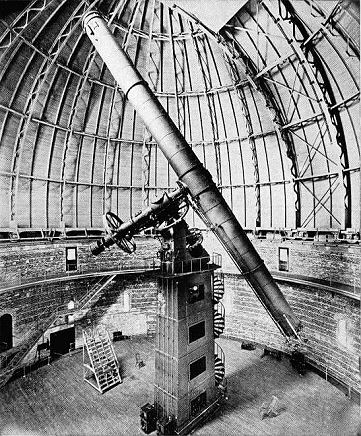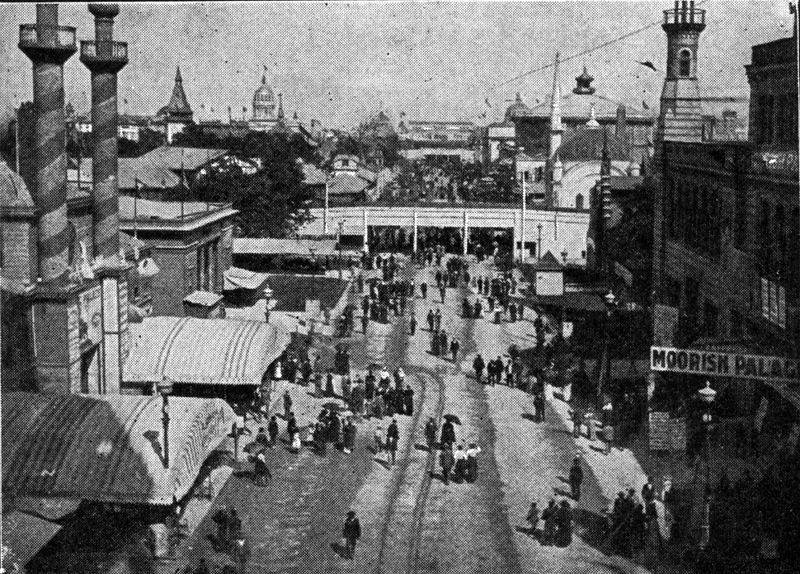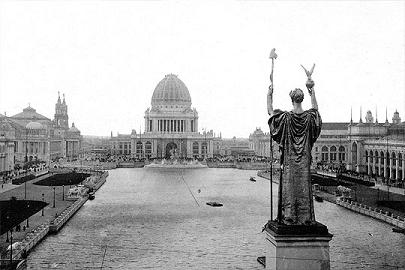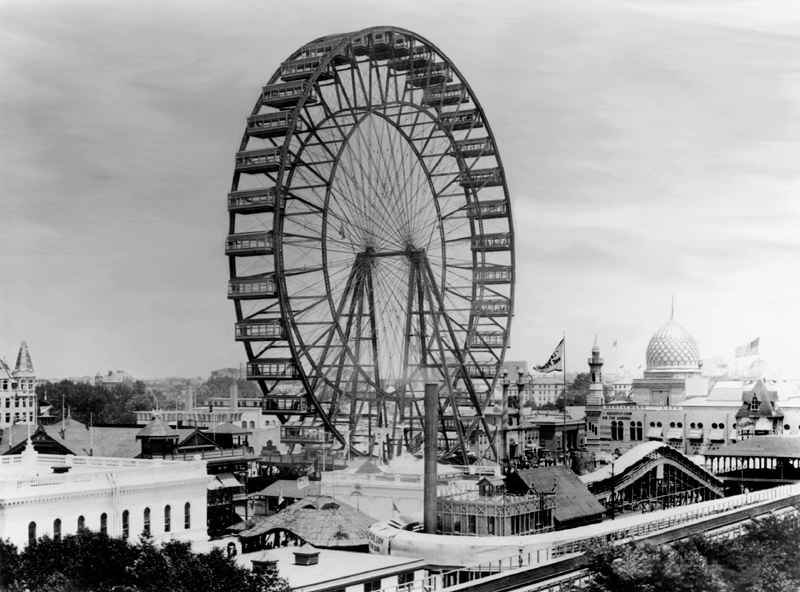Added 1 new A* page:I mentioned yesterday that the Swedish Solar Telescope is the second-largest optical refracting telescope in operation. The *largest* optical refracting telescope in operation is the 102-cm 'scope at Yerkes Observatory in Wisconsin--operated by the University of Chicago, my alma mater! :); that telescope is an old one, having been exhibited at the 1893 World's Fair in Chicago before being installed at the observatory. Here it is installed in 1897:

(source)
That World's Fair in Chicago was quite the humdinger, and not just because of that huge telescope. Some 200 buildings, mostly sporting a neoclassical style, were constructed for it; for the most part they were intended to be temporary only, and of all the buildings constructed for the Fair, only two remain: the Palace of Arts, now the Museum of Science and Industry--my college dorm was just one door up from the park in front of that huge place--and the building now occupied by The Art Institute of Chicago.
The Fair took place in Jackson Park and the Midway (just south and west of the Museum of Science and Industry on Chicago's south side; the Midway, continuing west from the Museum, forms the southern boundary of the main University of Chicago campus--I crossed it each day to get to my painting studio and classrooms in their old art building, a ramshackle affair supported at its core by the workshop of U of C art professor Lorado Taft, a famous sculptor in his own right, and a man instrumental in creating some of the monumental sculptures adorning those neoclassic buildings in the Fair; it was he who led the charge after the fair to restore the Palace of Arts, although he of course wanted it to be turned into a sculpture museum, which didn't happen--science and industry beat art in that one), which looked like this and this respectively, at the time:
The Midway:

image by E. Benjamin Andrews (source)
Jackson Park (Court of Honor and Grand Basin):

(source)
It was at this World's Fair that the AC--"alternating current"--electrical power pioneered by Nikola Tesla was first put to widespread use--by Westinghouse, to light all those buildings of the Fair's neoclassic "White City"; they had to overcome machinations by rivals Thomas Edison and General Electric, who in retaliation for losing the bid to Westinghouse had the use of Edison's light bulbs banned from the Fair--Westinghouse had to whip up a differently designed bulb just for the Fair, and the bulb they came up with replaced Edison's platinum (!) lead-in wires "with an iron-nickel alloy, thus greatly reducing the cost and increasing the life of the lamp."
That AC power and those iron-nickel alloy wires no doubt helped light up George Ferris' very first wheel, one of the biggest attractions, and one he hoped would rival the monumental Eiffel Tower sported by the previous World's Fair four years earlier in Paris--that might have been a bit optimistic; still, the ride obviously caught on:

(source)
Juicy Fruit made its first appearance at the Chicago Fair, and it was a landmark event in the history of breakfast, too, with Quaker Oats, Cream of Wheat, and Shredded Wheat all having their debuts. And okay who cares about that stuff, because it was at this Fair that Milton Hershey became fascinated with and bought German chocolate-making machinery then on exhibition, which he would use to produce his first chocolates to complement his successful line of caramels.
It was a fine day for science.
|
